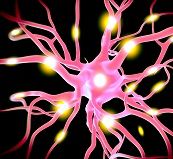Article
Brain Protein May Inhibit Relapse in Cocaine Addiction
Author(s):
Mice which were previously self-administering cocaine were less likely to go back to the habit after a period of abstinence, during which brain proteins were measured, according to a report published in Molecular Psychiatry.

Changing part of a receptor protein can alter animals’ perception of cocaine addiction after a period of abstinence, according to a study published in Molecular Psychiatry.
Researchers from the Perelman School of Medicine at the University of Pennsylvania observed cocaine-experienced animal models and their receptor proteins after various bioengineered changes. In the first phase of the study, mice were allowed to self-administer cocaine for 21 days. The researchers then withheld the drug for 7 days and examined the animals’ brains. After the period of abstinence, the levels within the nucleus accumbens of both edited GluA2 and of the enzyme responsible for editing were reduced when compared to the non-drugged animals.
The brain’s AMPA receptors are made up of 4 subunits, GluA1 through GluA, and had been discovered previously by another Perelman researcher. The GluA2 subunit specifically determines whether or not the receptor is permeable to calcium, which could enhance the strength of the signals received by the receptor.
The researchers wanted to examine the role of the nucleus accumbens — a structure which is involved in reward and addiction – could produce glutamate transmission in the brain. The relationship of GluA2 editing within the accumbens in models of cocaine-exposed animals specifically interested the researchers.
“The critical role of the AMPA receptor in cocaine addiction is clear,” Ghazaleh Sadri-Vakili, PhD, senior author of the report, said in a press release. “We have known that activation of the AMPA receptor in the nucleus accumbens — an area of the brain important for drug addiction – promotes the resumption of cocaine seeking in animal models, and this study identifies an increased contribution of calcium-permeable AMPA receptors to this process.”
In another group of animals, the researchers found that inducing overexpression in the nucleus accumbens of the editing enzyme both increased the GluA2 and AMPA receptor presence. It reduced the relapse of the cocaine-experienced animals which were given access to self-administering cocaine after an abstinence period of 7 days.
“Our findings support the novel hypothesis that calcium-permeable AMPA receptors containing unedited GluA2 subunits contribute to cocaine seeking and that repairing the deficient editing of GluA2, possibly by regulation of ADAR2 expression, could be a treatment strategy for cocaine addiction,” Sadri-Vakili concluded.
These results also apply to humans, the statement explained. The adult brain’s GluA2 subunits have been edited at the RNA processing stage into a form that makes calcium impermeable. These GluA2 disruptions create calcium-permeable receptors and have been linked to mental illnesses such as depression, epilepsy, and amyotophic lateral sclerosis.




